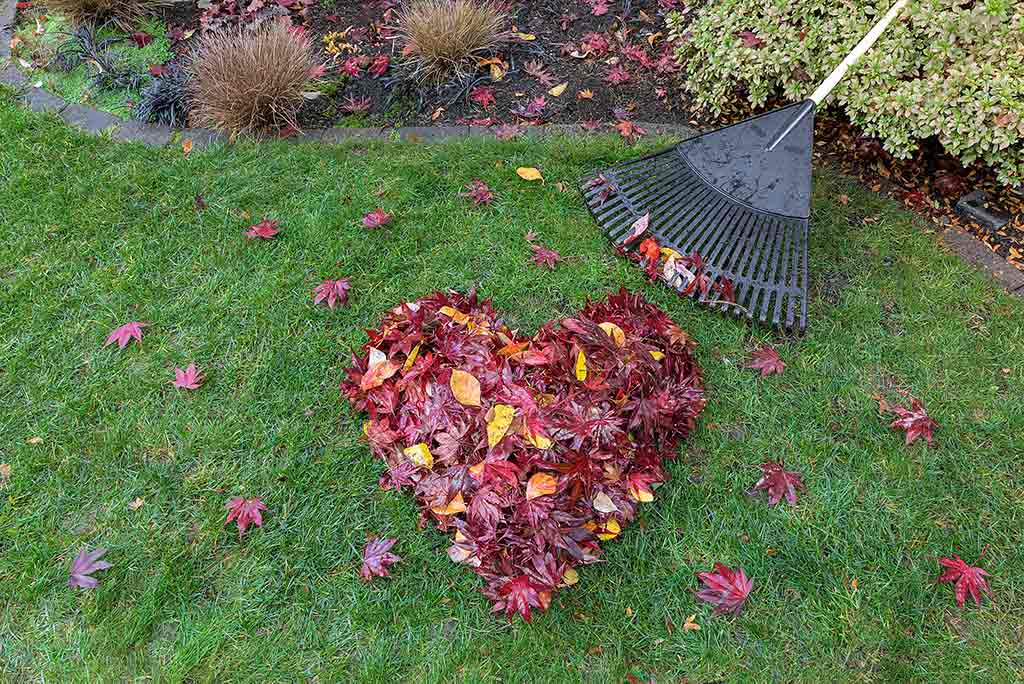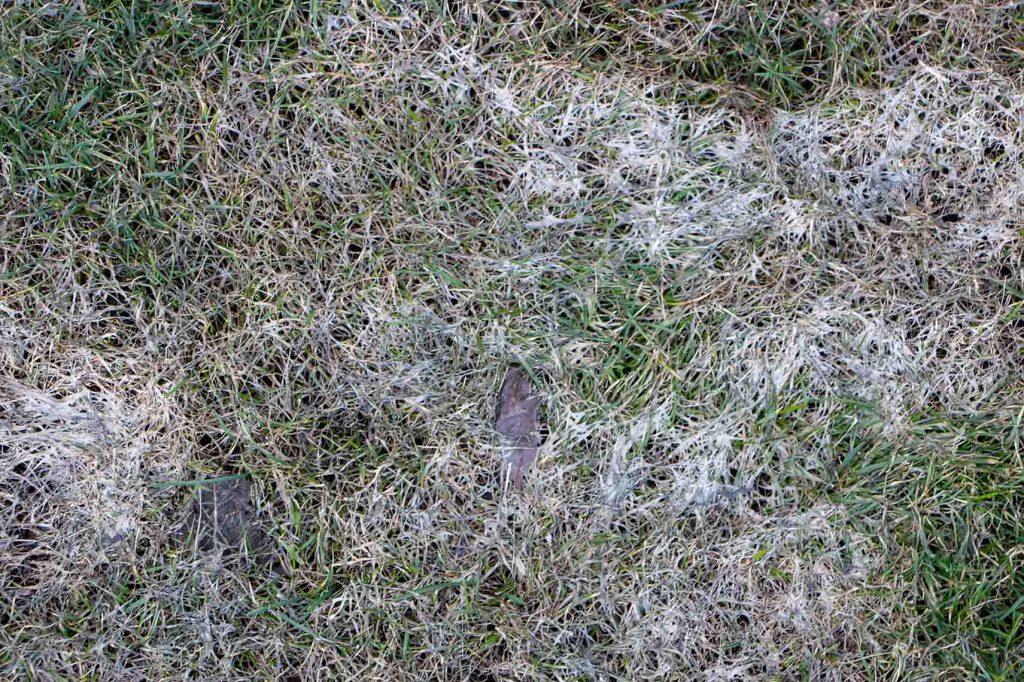
It’s the middle of winter, and you’re probably not thinking about your lawn. But, believe it or not, this is the time to start thinking about next year’s lawn care needs! One of the most important things you can do to prepare your lawn for winter is fertilize it. Read on to learn about the benefits of winter lawn fertilization!
What Does Winter Fertilization Mean?

When we talk about applying a winter (or “winterizing”) fertilizer to your lawn, we don’t necessarily mean a fertilizer treatment that takes place during winter. In fact, depending on your lawn’s grass type and the climate, winter fertilizers are meant to be applied in fall, before the first frost, in order to sustain your lawn through the damaging winter weather.
If lawn care is neglected as winter approaches, you will likely find yourself with dead and thin patches everywhere in the following spring. This is due to the fact that grass enters into a state of dormancy during winter, meaning it stops growing and becomes more susceptible to damage. This is why it is so important to make sure your lawn is in good shape before dormancy by increasing nutrient reserves with winterizing fertilizer!
What Makes Winter Fertilizers Different?

Winter fertilizers are designed to help promote healthy root growth in your lawn during the cold winter months. They contain an adjusted amount of the essential nutrients that are in all regular fertilizers, which can help give your lawn a boost once it comes out of dormancy in the spring.
The main difference between regular and winter fertilizer lies in their nutrient ratios. While regular summer fertilizers usually have an NPK (nitrogen-phosphorus-potassium) ratio that ranges from 2:1:1 to 6:2:3, winter fertilizers tend to have a higher ratio of nitrogen, often reaching up to 10:1:1. This higher amount of nitrogen helps promote healthy root growth so your lawn can absorb as much nutrition as possible before winter.
Another major role of winter fertilizer is to fortify grass blades before winter weather arrives. This requires a higher portion of phosphorus and potassium than the amounts you would find in a normal fertilizer.
Cool-season lawns need more nitrogen for winterization treatments. Nitrogen enhances your lawn’s color and texture, and it improves the rate of growth. Lawns that perform well in colder temperatures will store any nitrogen applied in late fall and use it to burst to life in early spring.
Warm-season lawns benefit from increased levels of potassium for winterization. Potassium helps protect grass against cold temperatures, and it helps strengthen roots. Since warm-season lawns struggle more in the cold, increased potassium is crucial to your lawn’s survival through winter.
When To Apply Winter Fertilizer

As we alluded to earlier, winter fertilizer should be applied in late fall, before the ground freezes. This is usually around mid to late October here in northern Utah. It’s important to make sure you stay vigilant as winter draws nearer, because applying a winter fertilizer too early could have catastrophic effects on your lawn right before winter, which is the last thing you want. With the adjusted nutrient ratio of winter fertilizers, you could end up stressing your lawn with too much nitrogen too early, and your lawn would likely not have enough time to recover before dormancy.
Of course, you also want to make sure you do not apply winter fertilizer too late in the year. Obviously, if the ground is covered in snow, it is way too late to apply that final winterizing fertilizer. Even if there is no snow on the ground, your lawn entering dormancy during freezing temperatures means it stops all activity. Your lawn will not absorb any fertilizer if it has already stopped growing for the year.
How To Apply Winter Fertilizer
Applying winter fertilizer is similar to applying regular fertilizer—you will still need a spreader or other device to distribute the product evenly across your lawn, but you can also do it by hand. However, you should be sure to follow the instructions on the package closely, as some fertilizers may require different application methods than others. Additionally, it’s important that you water your grass after application in order to help activate the nutrients and prevent any potential burning from over-application!
- DON’T FORGET TO WATER! Remember that winter fertilizers are usually granular because the form allows for a more slow release of nutrients than a liquid fertilizer. Granular fertilizer MUST be watered-in to become activated, which is all the more reason to make sure you get this done before the first frost of the year.
Is It Necessary?

Not using winter fertilizer can have some very negative effects on your lawn when spring rolls around. Without the essential nutrients that winter fertilizers provide, your lawn may start to struggle during the cold months and become more vulnerable to damage from snowfall, cold temperatures, ice, and other harsh weather conditions. Also, if you neglect fall and winter lawn care needs, you are inviting fungal lawn diseases to invade your turf.
In addition, not using winter fertilizer can weaken the overall health of your lawn in spring. This means it will take longer for your grass to grow back and reach its full potential once temperatures start rising again. This can leave you with a patchy looking lawn at best, or even permanently damaged grass at worst. Basically, if you neglect your lawn’s fertilization needs before winter, you will regret it in spring!
Keep Your Lawn Looking Great This Winter!

Remember that applying winter fertilizer is just one method available to you for winterproofing your lawn. Though these steps are not taken by homeowners nearly as often as they should be, adjusting all your lawn care routines to accommodate the effects of winter is the best way to make sure your lawn thrives in spring!
- Mowing – Gradually lower your mower blade. Mowing about an inch lower than normal for your final cut of the season will actually help preserve the quality of grass blades throughout winter.
- Watering – Cut watering by 50% until growth completely stops. Deep, infrequent watering sessions (roughly once a week) will encourage deeper root growth throughout the growing season.
- Aerating – Core and liquid aeration both offer methods of decompressing your lawn and enabling it to absorb more nutrients, which is exactly what your lawn needs to be doing as it prepares for winter.
- Overseeding – Put down new seed after you aerate, and your lawn will be lush and green in spring! Overseeding typically goes hand-in-hand with fall aeration because it is the optimal time for seeds to germinate and burst to life in spring!
Tuxedo Yard Care is committed to providing northern Utah with the best fertilization services all year long, and you never have to worry about us skipping that important winter fertilizer application! Check out our fertilization program in more detail here, or call your local lawn care company to find out how you can protect your lawn this winter.



